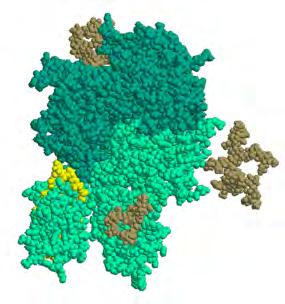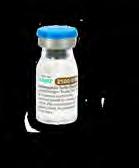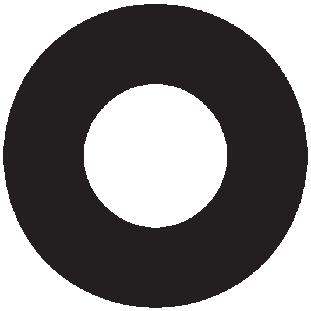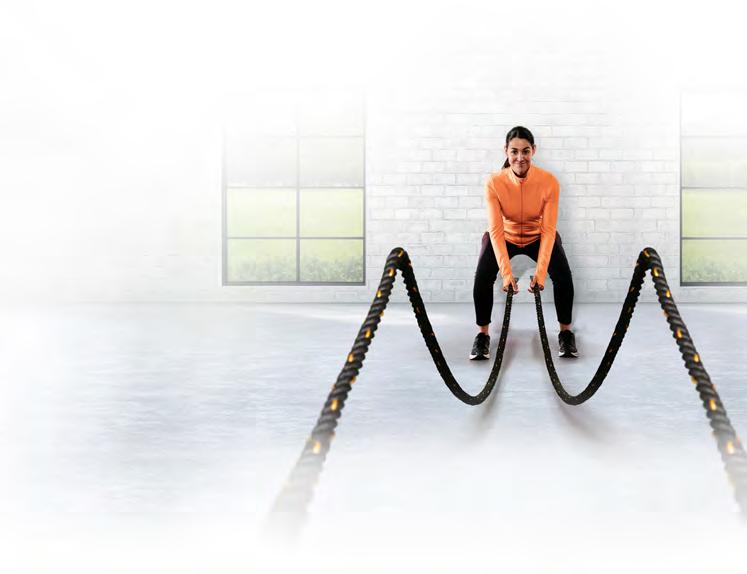Factor Replacement Therapies From Octapharma

Please see Indications and Usage on pages 2 and 6.
Please see Important Safety Information throughout.
EDUCATIONAL GUIDE for Patients, Parents, and Caregivers
Factor VIII (FVIII) Replacement Is Recognized as the Foundation and Standard of Care for Hemophilia A1
Not All FVIII Products Are the Same
Recombinant FVIII (rFVIII) products are made using recombinant DNA technology1
Design differences among rFVIII products include the host cell line (human or hamster), manufacturing process, and purification methods1,2
Inhibitors can impair the effectiveness of FVIII. A higher risk of inhibitors has been seen with rFVIII products derived from hamster cell lines than with rFVIII derived from a human cell line3 High-titer inhibitors are associated with a greater loss of effectiveness of FVIII treatment4
Most of the currently available rFVIII products are made from hamster cell lines
NUWIQ Is A Natural Choice
Produced in a human cell line without chemical modification of protein fusion6
NUWIQ closely resembles natural FVIII produced in the human body. The body’s immune system may be less likely to see the protein as foreign and make inhibitors against it7
NUWIQ has high binding affinity to von Willebrand factor (VWF). This binding helps protect FVIII and keep it from being eliminated too quickly6
Indications and Usage

NUWIQ® is a recombinant antihemophilic factor [blood coagulation factor VIII (Factor VIII)] indicated in adults and children with Hemophilia A for on-demand treatment and control of bleeding episodes, perioperative management of bleeding, and for routine prophylaxis to reduce the frequency of bleeding episodes. NUWIQ is not indicated for the treatment of von Willebrand Disease.
Contraindications
NUWIQ is contraindicated in patients who have manifested life-threatening hypersensitivity reactions, including anaphylaxis, to the product or its components. The formation of neutralizing antibodies (inhibitors) to Factor VIII can occur following the administration of NUWIQ.
ZERO Inhibitors in PTPs, LOW Inhibitors in PUPs
ZERO Inhibitors in Previously Treated Patients (PTPs) When Switching to NUWIQ6,8
In studies that included 135 PTPs, no patients treated with NUWIQ developed an inhibitor after ≥50 exposure days and ≥6 months of treatment
rFVIII from hamster
LOW Rate of Inhibitors in Previously Untreated Patients (PUPs)*
NuProtect trial evaluated 105 PUPs with severe hemophilia A treated with NUWIQ for 100 exposure days or a maximum of 5 years
Results demonstrated a 16.2% absolute incidence of high-titer inhibitors with NUWIQ in PUPs—and a cumulative incidence of 17.6%
SIPPET 3
HIGHER Rate of Inhibitors in PUPs Treated With rFVIII Made From Hamster Cell Lines Than PUPs Treated With Natural FVIII Made From Human Plasma†
The SIPPET trial studied inhibitor rates in 251 PUPs
Cumulative incidence of high-titer inhibitors was 28.4% in PUPs treated with hamster cell line-derived rFVIII and 18.6% in PUPs treated with plasma-derived FVIII (pdFVIII)†
SIPPET, Survey of Inhibitors in Plasma-Product Exposed Toddlers.
* NuProtect results are presented in parallel to SIPPET results for context. These trials were performed under different conditions and with different populations. The observed incidence of inhibitors may be influenced by assay methodology, sample handling, timing of sample collection, concomitant medications, underlying disease, and other factors.
† Differences in high-titer inhibitor rates between pdFVIII and rFVIII were not found to be statistically significant. SIPPET authors suggested this may have been due to the small sample size of the study.
Important Safety Information
Hypersensitivity reactions, including anaphylaxis, are possible with NUWIQ. Early signs of hypersensitivity reactions that can progress to anaphylaxis may include angioedema, chest tightness, dyspnea, wheezing, urticaria, or pruritus. Immediately discontinue administration and initiate appropriate treatment if hypersensitivity reactions occur.
Powerful Bleeding Control
| Effective
of bleeds
adults and children6
Personalized Prophylaxis
Optimize Your Treatment With Fewer Infusions
With personalized prophylaxis, your NUWIQ dose and dosing frequency is tailored to your individual pharmacokinetics (PK)—how the body interacts (absorbs, metabolizes, eliminates) with treatment
Personalized prophylaxis with NUWIQ allows most patients to extend their dosing interval to twice weekly or less—while maintaining bleeding control12
Taking NUWIQ
Convenience, Flexibility, and Simplicity
Available in a Wide Range of Dosage Strength Vials6
Everything you need for easy infusions: product vial, pre-filled syringe, vial adapter, butterfly needle, and alcohol swabs
DEMAND | Rapid resolution of bleeding in adults (N=986
bleeds resolved with 1 infusion (90%) or 2 infusions (97%)
Excellent bleed control during/after major or minor surgery (N=33 surgeries)6
of minor surgeries, hemostasis rated as “excellent”
of major surgeries, hemostasis rated as “excellent” or “good”
Proven Safety and Tolerability6
In clinical studies that included 135 PTPs, no patients experienced serious adverse reactions to NUWIQ
No patients experienced anaphylaxis, a very serious allergic reaction
No patients dropped out of the study because of an adverse reaction to NUWIQ
Important Safety Information (continued)
The formation of neutralizing antibodies (inhibitors) to Factor VIII can occur following the administration of NUWIQ. Monitor all patients for the development of Factor VIII inhibitors by appropriate clinical observations and laboratory tests. If the plasma Factor VIII level fails to increase as expected, or if bleeding is not controlled after NUWIQ administration, suspect the presence of an inhibitor (neutralizing antibody).
All NUWIQ vial sizes are reconstituted with an easy-to-use 2.5 mL syringe, pre-filled with water for injection
NUWIQ is the only rFVIII that offers the





across vial strengths



Adverse Reactions
The most frequently occurring adverse reactions (>5%) in clinical trials were upper respiratory tract infection, headache, fever, cough, lower respiratory tract infection, rhinitis, chills, abdominal pain, arthralgia, anemia, and pharyngitis.
TAKE CONTROL OF VWD
Any Patient, Any Type of Bleed, Any Type of VWD
wilate is the only VWF/FVIII concentrate with a balanced 1-to-1 VWF/FVIII ratio, similar to the ratio that occurs naturally in the body13-16

Low Recommended Dosing For All Types of VWD13*
You may be able to lower the initial dose (also called loading dose) and increase the amount of time in between your doses for bleeds that require multiple doses (also called maintenance dose)
Most bleeds are treated for 1 to 3 days, but severe bleeding may need longer treatment
*Based on the Recommended Dosing Guide for wilate. See Dosage and Administration, section 2.1 of full Prescribing Information.
Powerful Treatment For Bleeds13
wilate provides control for bleeds in adults, children and infants with types 1, 2, or 3 VWD, including all VWD subtypes—anywhere in the body13,17-19
MANAGING BLEEDING IN SURGERY
Effective Control Without FVIII Accumulation
Successful control of bleeding in surgery13,18*
Nose Bruising Gum Joint Gastrointestinal Menstrual Muscle Childbirth
Indications and Usage
wilate® is a von Willebrand Factor/Coagulation Factor VIII Complex (Human) indicated in children and adults with von Willebrand disease for on-demand treatment and control of bleeding episodes and for perioperative management of bleeding. wilate® is also indicated in adolescents and adults with hemophilia A for routine prophylaxis to reduce the frequency of bleeding episodes; and for on-demand treatment and control of bleeding episodes.
Contraindications
wilate is contraindicated in patients with known hypersensitivity reactions, including anaphylactic or severe systemic reactions, to human plasma-derived products, any ingredient in the formulation, or components of the container.
*Prospective, open-label, multinational study in 28 patients with VWD who underwent 30 surgical procedures.
The Importance of Minimizing FVIII Accumulation
FVIII levels may increase when repeat doses of VWF/FVIII are given, such as before and after surgery, possibly leading to FVIII accumulation. FVIII accumulation can increase the risk of a blood clot, also called a venous thromboembolism (VTE). No FVIII accumulation or VTEs were reported with wilate in a pivotal clinical trial.13,17
VWF and FVIII Plasma Levels With wilate and Humate-P
wilate No accumulation of FVIII was observed after repeat dosing17
Warnings and Precautions Thromboembolic Events
Humate-P FVIII levels may increase after repeat dosing, potentially increasing the risk of FVIII accumulation20
In VWD, continued treatment using a FVIII-containing VWF product may cause an excessive rise in FVIII activity, which may increase the risk of thromboembolic events. Monitor plasma levels of VWF:RCo and FVIII activities in patients receiving wilate to avoid sustained excessive VWF and FVIII activity levels.
HIGH PURITY VWF/FVIII
To Minimize Potential Side Effects
wilate is purified through a series of steps that minimize impurities and help reduce the risk of side effects13-15
SIMPLE AND CONVENIENT USAGE
wilate Is Available in 2 Vial Sizes, 500, or 1000 IU
Includes Mix2Vial™ needle-free transfer device—a quick and easy way to mix wilate with less risk of accidental sticks and a built-in filter for a fast and easy process13
Store wilate up to 36 months in a refrigerator (+2°C to +8°C or 36°F to 46°F) from the date of manufacture13
Within this period, wilate may be stored up to 6 months at room temperature (maximum of +25°C or 77°F)

With wilate, there is a single peak containing only the natural
complex
Competitor VWF/FVIII
The competitor VWF/FVIII shows additional peaks from other proteins
Warnings and Precautions (continued)
Hypersensitivity Reactions
Hypersensitivity reactions may occur with wilate. Signs and symptoms include angioedema, burning and stinging at the infusion site, chills, flushing, generalized urticaria, headache, hives, hypotension, lethargy, nausea, restlessness, tachycardia, tightness of the chest, tingling, vomiting, and wheezing that may progress to severe anaphylaxis (including shock) with or without fever. Closely monitor patients receiving wilate and observe for any symptoms throughout the infusion period
Because inhibitor antibodies may occur concomitantly with anaphylactic reactions, evaluate patients experiencing an anaphylactic reaction for the presence of inhibitors.

Watch a step-by-step video on how to reconstitute and infuse wilate
Warnings and Precautions (continued)
Neutralizing Antibodies (VWD)


Neutralizing antibodies (inhibitors) to FVIII and VWF in patients with VWD, especially type 3 patients, may occur. If a patient develops inhibitor to VWF (or to FVIII), the condition will manifest itself as an inadequate clinical response. Thus, if expected VWF activity plasma levels are not attained, or if bleeding is not controlled with an adequate dose or repeated dosing, perform an appropriate assay to determine whether a VWF inhibitor is present.
In patients with antibodies against VWF, VWF is not effective and wilate administration may lead to severe adverse events. Consider other therapeutic options for such patients. Because inhibitor antibodies may occur concomitantly with anaphylactic reactions, evaluate patients experiencing an anaphylactic reaction for the presence of inhibitors.
Transmissible Infectious Agents
wilate is made from human plasma. Because this product is made from human blood, it may carry a risk of transmitting infectious agents, e.g., viruses, and theoretically, the variant Creutzfeldt-Jakob disease (vCJD) agent. There is also the possibility that unknown infectious agents may be present in the product. The risk that wilate will transmit viruses has been reduced by screening plasma donors for prior exposure to certain viruses, by testing for the presence of certain current virus infections, and by inactivating and removing certain viruses during manufacture. Despite these measures, it may still potentially transmit disease.
Record the batch number of the product every time wilate is administered to a patient, and consider appropriate vaccination (against hepatitis A and B virus) of patients in regular/repeated receipt of wilate. ALL infections thought by a physician possibly to have been transmitted by this product should be reported by the physician or other healthcare provider to Octapharma USA, Inc., at 1-866-766-4860.
Available in a wide range of dosage strength vials to accommodate your dosing needs
A comprehensive, personalized patient support program for people living with bleeding disorders
Everything you need for easy infusions. In addition to the product vial and pre-filled syringe, each NUWIQ box comes with a vial adapter, butterfly needle, and alcohol swabs.
Factor My Way Assistance
All NUWIQ vial sizes are reconstituted with an easy-to-use 2.5 mL syringe, pre-filled with water for injection
Factor My Way Connection
NUWIQ is the only rFVIII that offers the lowest 2.5 ml diluent volume across vial strengths
Financial assistance programs and real world insurance know-how all at your fingertips.
Factor My Way Events
Join scheduled live and on-demand digital information programs and events.
NUWIQ or wilate Free Trial
Meet experts and join our online support community to help you access resources and build relationships.
Factor My Way Learning
Learn-as-you-go, practical information about bleeding disorders, treatment, and lifestyle management.
Opportunity for you to try NUWIQ or wilate at no cost. Eligible patients can receive a free trial of NUWIQ or wilate—shipped directly to you and administered under the supervision of your healthcare provider.
Co-pay Assistance
Available through Factor My Way, provides eligible patients with significant savings on some of the costs associated with their NUWIQ or wilate treatment.
or contact the FDA at 1-800-FDA-1088 or www.fda.gov/medwatch

Warnings and Precautions (continued)
Monitoring and Laboratory Tests
Monitor plasma levels of VWF:RCo and FVIII activities in patients receiving wilate to avoid sustained excessive VWF and FVIII activity levels, which may increase the risk of thromboembolism, particularly in patients with known clinical or laboratory risk factors. Monitor for development of VWF and FVIII inhibitors. Perform assays to determine whether VWF and/or FVIII inhibitor(s) is present if bleeding is not controlled with the expected dose of wilate.
References: 1. Cafuir LA, et al. Ther Adv Hematol. 2017;8(10):303-313. 2. Lissitchkov T, et al. Haemophilia. 2017;23:697-704. 3. Peyvandi F, et al. N Engl J Med. 2016;374:2054-2064. 4. Hemophilia Federation of America. Inhibitors. Available at: https://www.hemophiliafed.org/disease_type/inhibitors 5. Lieuw K. J Blood Med. 2017;8:67-73. 6. NUWIQ full Prescribing Information. Paramus, NJ: Octapharma USA, Inc.; rev 2021. 7. Sandberg H, et al. ThrombRes. 2012;130(5):808-817. 8. Data on file. Paramus, NJ: Octapharma USA, Inc. 9. Liesner RJ, et al. Thromb Haemost. 2021;121:1400–1408. 10. Valentino LA, et al. Haemophilia. 2014;20(Suppl. 1):1-9. 11. Kessler C, et al. Haemophilia. 2015;21(Suppl. 1):1-12. 12. Lissitchkov T, et al. Haemophilia. 2017;23:697-704. 13. wilate full Prescribing Information. Paramus, NJ: Octapharma; rev September 2019. 14. Stadler M, et al. Biologicals. 2006;34:281-288. 15. Octapharma AG, Data on file. 16. Kessler CM, et al. Thromb Haemost. 2011;106:279-288. 17. Srivastava A, et al. Haemophilia. 2017;23:264-272. 18. Berntorp E, et al. Haemophilia. 2009;15:122-130. 19. Sholzberg M, et al. TH Open. 2021;5:e264-e272. 20. Lethagen S,et al. J Thromb Haemost. 2007;5:1420-1430.
Warnings and Precautions (continued)
Adverse Reactions
The most common adverse reactions to treatment with wilate (≥≥1%) in patients with VWD were hypersensitivity reactions, urticaria, and dizziness. The most common adverse reactions to treatment with wilate (≥≥1%) in previously treated patients with hemophilia A was pyrexia (fever).




